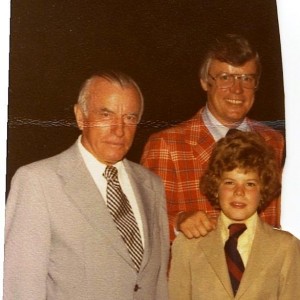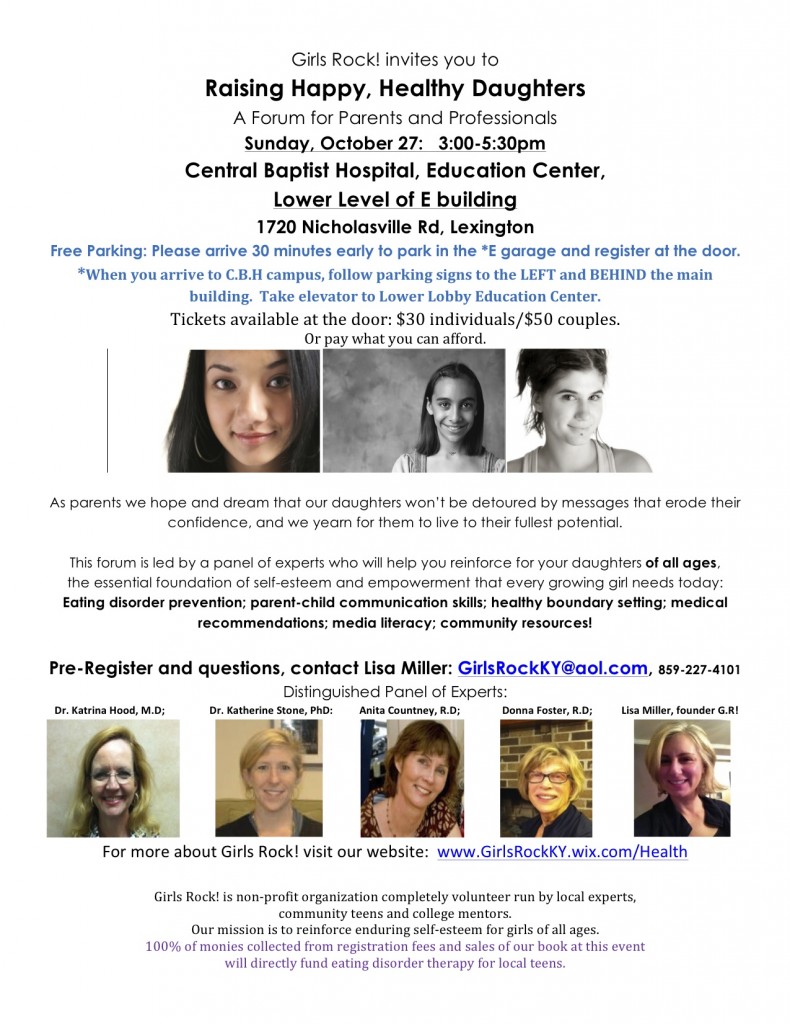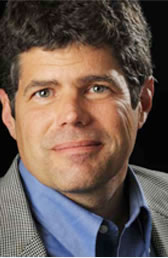By John Y. Brown III, on Mon Nov 4, 2013 at 12:00 PM ET  Favorite family Halloween story ever. Favorite family Halloween story ever.
When my son Johnny was 3 he dressed up like Batman. He was dressed in full character and kept the mask on at all times–and although only 3 he was a very friendly and talkative child already.
We stopped by Blockbuster before Trick-or-Treating and there were two teenagers, too cool for Halloween (or life), who glanced at us and gave us a scoffing, dismissive look—as if to say “A father and son on Halloween. How lame.”
They had piercings all over, tattoos and Goth attire. Even though I was in my mid 30s, rebellious teens intimidated me so I nudged Johnny away from them.
When I wasn’t looking, Johnny slipped away from me and when I heard him he was making conversation with the two uber-cool teens.
“Hey you guys!” He said cheerfully. “I’m Batman.” No response…just a look of disgust from the teens.
 Then Johnny added, “So who are you guys dressed up as?” Then Johnny added, “So who are you guys dressed up as?”
It was a total smack down by a 3 year old to two teens. They were speechless and humiliated with how silly they looked. They tucked tail and slinked out of the door.
I’ve always felt safe when I was with Johnny since then.
By Saul Kaplan, on Mon Nov 4, 2013 at 8:30 AM ET I’m not much of a car guy but when Ford announced it was dumping its Mercury line I got a little nostalgic. I wasn’t born when “Rebel Without a Cause” was released in 1955 but remember seeing the movie as a kid and being in awe of James Dean. Who can’t relate to the lonely rebellious outsider, with his slicked back hair and leather jacket, trying to fit in? No one remembers the name of the character Dean played (Jim Stark). After a tragic death James Dean became the character in our minds for eternity. Don’t get me started on Natalie Wood. The thing everyone remembers and the real icon from the classic movie is the cool Mercury James Dean drove. It was a 1949 six-passenger coupe, fitted with a V-8 and an attitude to match Dean’s character. The Merc was coolness personified.
Don’t you wonder how the Merc became so cool coming from Ford where Henry’s motto was, any customer can have a car painted any colour that he wants so long as it is black. The Model T was the iconic product of a new industrial era. Henry Ford gave us the assembly line and mass production. He didn’t give us cool. For that you have to look to his only son Edsel, who had a better idea. I know we associate the name Edsel with failure but that is because of a disastrous Ford model that was introduced in 1958 well after Edsel had died in 1943. Edsel Ford was not a failure.
Edsel was far more interested in design and flashier styling for cars than his father. He relentlessly advocated for more modern cars reflecting consumer tastes to replace the Model T but was consistently overruled by his father. It wasn’t until sales of the Model T started to decline that Edsel began having influence on car body design and performance specifications. He was very interested in high performance cars and many give him credit for customizing the first “Hot Rod” with a V-8 engine. In 1939 he started the Mercury brand from scratch. It was a way to offer consumers a car that was more stylish than a Ford at a price point between a Ford and the luxury Lincoln brand. Edsel brought the power of design to Ford and had a big impact on the auto industry.
 Mercury really took off with the introduction of the 1949 model, the Mercury Eight. Not only did it become famous as James Dean’s ride in “Rebel Without a Cause” it quickly was popular with car customizers. Maybe it was an early example of open source innovation. An entire ecosystem of hobbyists and suppliers grew up around customizing the 49 Mercury. Hot Rod and Motor Trend featured pictures and stories about the coolest chopped Mercs. Hobbyists today still customize old Mercs and there are fiberglass replicas in production that are popular with today’s kit car and hot rod enthusiasts. Not many cars have had that much staying power and impact. Mercury really took off with the introduction of the 1949 model, the Mercury Eight. Not only did it become famous as James Dean’s ride in “Rebel Without a Cause” it quickly was popular with car customizers. Maybe it was an early example of open source innovation. An entire ecosystem of hobbyists and suppliers grew up around customizing the 49 Mercury. Hot Rod and Motor Trend featured pictures and stories about the coolest chopped Mercs. Hobbyists today still customize old Mercs and there are fiberglass replicas in production that are popular with today’s kit car and hot rod enthusiasts. Not many cars have had that much staying power and impact.
Unfortunately Mercury’s heyday was in the 50′s. It hasn’t been interesting since with few remarkable models. I am not surprised that Ford is dumping the brand. It has no clear positioning in the market. I can’t think of a single person I know who owns one. While it makes sense for Ford to consolidate its brands and platforms it didn’t stop me from a little nostalgia when I heard that Mercury, the messenger of the Gods, had a simple message for the brand, you’re fired. For all rebels without a cause it is worth taking a moment to remember what the 49 Merc stood for.
By John Y. Brown III, on Fri Nov 1, 2013 at 1:30 PM ET The Stages of Development for Halloween:
1) Scared. (Ages 1-7) Halloween musters up images of ghosts and goblins, witches and werewolves; ghost stories, horror movies and creepy images dominate our understanding of Halloween.
2) Candy (Ages 8-12) The frightening images promoted by Halloween are displaced by the more practical desire to acquire and ingest candy.
3) Fun (Ages 13-24) Halloween becomes an excuse to party with our peers. Candy and Fear are no longer primary ways of understanding Halloween and are replaced with opportunities for interacting with the opposite sex, dancing, being fabulous and related behaviors.
4) Parenting–(Ages 25–49) Halloween becomes a wholesome family activity for parents and children to spend time together decorating the house, carving pumpkins, Trick-or-Treating, sipping hot apple cider and eating candy.
5) Partial Alienation (Ages 50-59) These are the years where you don’t have anything to do with Halloween except buy candy for Trick-or-Treaters whom you grow to resent bc you have other things you’d rather do on Halloween Night but don’t want your home TP’ed or egged.
6) Partial Re-Integration (Ages 60-74) Grandparents are often given one or more nominal roles for some sort of Halloween activities with the grandchildren. Usually a glorified form of babysitting for parents still stuck in Stage 3 (Fun) as their way of relating to Halloween.
7) Full Alienation and Full Re-Integration (Ages 75 — ) Although you no longer actively participate in any Halloween activities (e.g. decorating house and providing candy to Trick or Treaters), you have become a person about whom children hear scary stories in their neighborhood (Stage 1). Terms like Witch, Ghosts, Haunted House, Razor Blades, and other Halloween related story telling subjects get associated with you as your primary connection to Halloween.
By John Y. Brown III, on Thu Oct 31, 2013 at 12:00 PM ET  We often confuse our primary task to be our ability to make the “right” decision …and avoid at all costs making a “wrong” decision. We often confuse our primary task to be our ability to make the “right” decision …and avoid at all costs making a “wrong” decision.
But life doesn’t really work that way. We don’t live in a world that deterministic, like playing the game show “Let’s Make a Deal” with Monty Hall and we have to choose behind one of three doors to determine if we go home with a brand new car or ragged looking Billy goat.
In the real world the important thing is to make a decision —and then “make it right.” It’s what we do “after” the decision is made that matters most. Not the decision itself.
Oh, and one other thing. If a decision and your efforts don’t pan out, nobody said you can’t change your mind. And then change it again. Just remember if you do, the new decision is only the starting point not the final destination.
By John Y. Brown III, on Mon Oct 28, 2013 at 12:00 PM ET The older I get the more I realize that the most important purpose of longevity isn’t being given the opportunity to accomplish more so I may want less —but rather being given the opportunity to forgive more so that I might judge less.
Life experience disappointingly fails to provide us with a growing insight into how uniquely superior we are to others.
And instead instructs us about how very …similar we are to those around us –and how capable we are of doing ourselves the things we fear the most and disdain most loudly.
 This awareness is usually diverted before it arrives and we write it off as something foreign and separate from us. This awareness is usually diverted before it arrives and we write it off as something foreign and separate from us.
If we can instead embrace these seemingly unsavory parts of ourselves and learn from them we are then able to replace shame with wisdom –and judgment with understanding.
And anxiety with joy.
By John Y. Brown III, on Tue Oct 22, 2013 at 12:00 PM ET
 JYB Sr., JYB Jr. and JYB III circa 1972 My grandfather Brown was (and still is –posthumously 28 years later) the family patriarch. And for pretty good reason. He was very disciplined, accomplished, learned, pulled himself from poverty as the son of a tenant farmer to achieve renown as a trial lawyer and being in debt like most well-to-do people, and –most of all–was a character with a seeming limitless number of memorable stories about him. Many of them true.
A story my mother liked to tell about him was when she had just married my father she sat in on one of his biggest trials that year. It was a packed courtroom and when a crucial piece of evidence was admitted against his client, my grandfather said, “Judge, that is inadmissible according to KRE 802 (11).” This impressed everyone attending with his encyclopaedic memory of the rules of evidence.
 Afterwards, my mom asked him, “Mr Brown, do you really know what KRE 802 (11) says?” And my grandfather responded, “No, honey. But neither does the judge.” Afterwards, my mom asked him, “Mr Brown, do you really know what KRE 802 (11) says?” And my grandfather responded, “No, honey. But neither does the judge.”
Love that story. Even if it isn’t true or entirely true. As Mark Twain said,
“Never let the truth get in the way of a good story.”
By Nancy Slotnick, on Tue Oct 22, 2013 at 8:30 AM ET
-
“The only way you could meet my crazy was by doing something crazy yourself. Thank you. I love you. I knew it the minute I met you. I’m sorry it took so long for me to catch up. I just got stuck. Pat.”
We all bring our crazy to a relationship. Silver Linings does a beautiful job of writing a relationship where both participants are crazy but they take turns. They meet each other where they’re at. They end sentences with a preposition. They scream and throw dishes in public. They hug people whom they have a restraining order against or from. They end sentences with a preposition again. Did I mention that people call me crazy? They think I’m dreaming my life away, just like John Lennon wrote.
I struggle with how to let people into my life without letting them take over. How to embrace my crazy without getting caught up in it. How to recognize someone else’s crazy when they’re telling you it’s you. And when it’s also you. So complicated.
Spoiler alert- I’m going to talk about Silver Linings some more- I just loved it so much. It is rare for a romantic comedy (nay, romantic comedy/drama) to get it right without being trite. One of my favorite scenes was at the diner. Tiffany (Jennifer Lawrence) opens up about herself and seems to be having a moment with Pat. She offers to help her out and then he insults her by not wanting to be associated with her in the context of his ex-wife.
Rather than crying and running out of the restaurant (at first, at least), which I would have done, she balks. That’s the best word for her face. She looks at him, condescendingly, and says; “You actually think I’m crazier than you.” Not in the form of a question, but as a statement of disbelief. It’s great. I admire that. I wish that in the midst of a heating argument I could have the composure to do that. It was awesome. And then she smashes all the dishes off the table in one fell swoop and runs out of the restaurant, crying. I kind of wish I could do that too.
The beauty of it is that Pat realizes in that moment that he’s crossed a line and then he comes to the rescue on her crazy. They go back and forth on this as their relationship blooms. And that gives new meaning to the phrase the “dance of intimacy.”
Read the rest of…
Nancy Slotnick: People Think I’m Crazy…
By Lisa Miller, on Mon Oct 21, 2013 at 3:00 PM ET Check out this important event for parents of daughters, coaches, teachers..anyone who influences growing girls:

By John Y. Brown III, on Fri Oct 18, 2013 at 1:30 PM ET  I joke a lot about being 50. But that isn’t the only age I consider myself. I joke a lot about being 50. But that isn’t the only age I consider myself.
A few hours ago, it was 2:30am on October 18th which is about the exact time I had my last drink of alcohol 28 years ago.
We each, if we are lucky, have our actual birth date and another birth date when we are, some would say, “re-born.” Not necessarily in the religious sense…although it often is.
A line I love which captures this truth well comes from the movie The Natural with Robert Redford playing an aging and ailing baseball superstar. “We live two lives. The life we learn from and the life we live after that.”
I believe that. It’s not a perfect demarcation but it is a profound one. Maybe more crudely put it is the “life we tried to lead” and failed at and the “life we built up from those ashes.” It isn’t really a failure as much as a right of passage.
Most young people are full of vim and vigor and have a limited and self-absorbed view of the the world. Sometimes they crash and burn early, as I did. Sometimes the crash and burn later after having tremendous success. Sometimes they smolder for years until they careen off the road and into a ditch. This is our first life. The war years. The wild years when anything was possible.
Then there is the next life. The reality years. You don’t sell out but integrate and find your place and hopefully a place where you can be and do what you are meant to be and do. Until a person has hit their own self-imposed wall, they may be fun but aren’t terribly useful. Being useful is not a priority during this first life anyway, not really.
The “wall” introduces a person to him or herself. And soon after that a new life, based on the realm of the possible begins. It is a better and more useful life. Not less passionate or less fun or less exciting. But a grown-up (in the best sense of the word) has joined your “road trip” and turned it into a lifelong metaphorical journey. My wall. My old and sated life ending. My new and more useful life beginning all started about this time 28 years ago.
Here’s the post from last year describing the night. Hope it helps someone else in some small way. New lives are like that.
By Nancy Slotnick, on Tue Oct 15, 2013 at 8:30 AM ET I was watching Lena Dunham on Charlie Rose the other day and despite the fact that I’m not loving her new haircut and the second season of Girls is proving to be overly ambitious, I was inspired.
And I shouldn’t be so hard on her. It would be almost impossible not to choke under the pressure that she is facing at such a young age. Emphasis on the almost impossible. Which brings me to the part of the interview that was so inspiring.
When asked about how she accomplished such a meteoric rise, Lena quoted her Dad as saying, “Love the possible.” That stuck with me. Especially because I am trying to make that kind of meteoric rise happen in my life. So I am embracing that idea. My new year’s resolution is, as I have told you previously, (see my blog that quotes Will Smith’s new movie) to be fearless.
 When you are fearless, anything is possible. Or is it? I embarked on a quest to see what is possible and what is in store for me, on a Tuesday morning recently. I was hoping that a store front is in store for me. I was contemplating the fact that anything is possible if you believe that you can achieve it. How do you draw that line? Is it possible that I could go to one of the most expensive neighborhoods in the city and procure a retail space by the end of the day without more than a stick of gum, $20 and a Metrocard in my pocket? When you are fearless, anything is possible. Or is it? I embarked on a quest to see what is possible and what is in store for me, on a Tuesday morning recently. I was hoping that a store front is in store for me. I was contemplating the fact that anything is possible if you believe that you can achieve it. How do you draw that line? Is it possible that I could go to one of the most expensive neighborhoods in the city and procure a retail space by the end of the day without more than a stick of gum, $20 and a Metrocard in my pocket?
Well, let’s see what the universe said. I was able to procure a grilled cheese. And it was good. And then, as I was strolling around, following the path of whatever the universe sent me, I passed by an art gallery with a grafitti-esque painted canvas. It read: “Enough is possible.” Thank you, universe, I have my answer!
Here’s how I interpreted that. Not everything is possible. I will not win the Tour de France in my lifetime. Even if I use performance enhancing drugs and pass the drug tests in the post-Lance-on-Oprah era. But having a bike ride with my son on a weekday and still getting him to get his homework done- that is possible. And that is really great.
What is endemic to the idea that “Enough is possible” is that we need to take action, without waiting for perfection. How many times have you said to yourself “If only?”
Read the rest of…
Nancy Slotnick: Love the Possible
|
The Recovering Politician Bookstore
|
 Favorite family Halloween story ever.
Favorite family Halloween story ever. Then Johnny added, “So who are you guys dressed up as?”
Then Johnny added, “So who are you guys dressed up as?”












